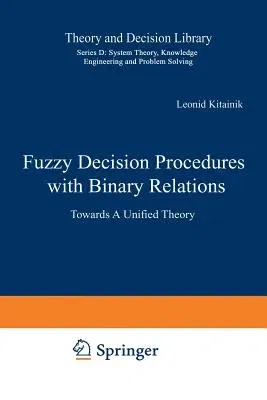Leonid Kitainik
(Author)Fuzzy Decision Procedures with Binary Relations: Towards a Unified Theory (Softcover Reprint of the Original 1st 1993)Paperback - Softcover Reprint of the Original 1st 1993, 23 October 2012

Qty
1
Turbo
Ships in 2 - 3 days
In Stock
Free Delivery
Cash on Delivery
15 Days
Free Returns
Secure Checkout
Part of Series
Theory and Decision Library D:
Print Length
255 pages
Language
English
Publisher
Springer
Date Published
23 Oct 2012
ISBN-10
9401048665
ISBN-13
9789401048668
Description
Product Details
Author:
Book Edition:
Softcover Reprint of the Original 1st 1993
Book Format:
Paperback
Country of Origin:
NL
Date Published:
23 October 2012
Dimensions:
23.39 x
15.6 x
1.52 cm
ISBN-10:
9401048665
ISBN-13:
9789401048668
Language:
English
Location:
Dordrecht
Pages:
255
Publisher:
Weight:
399.16 gm

